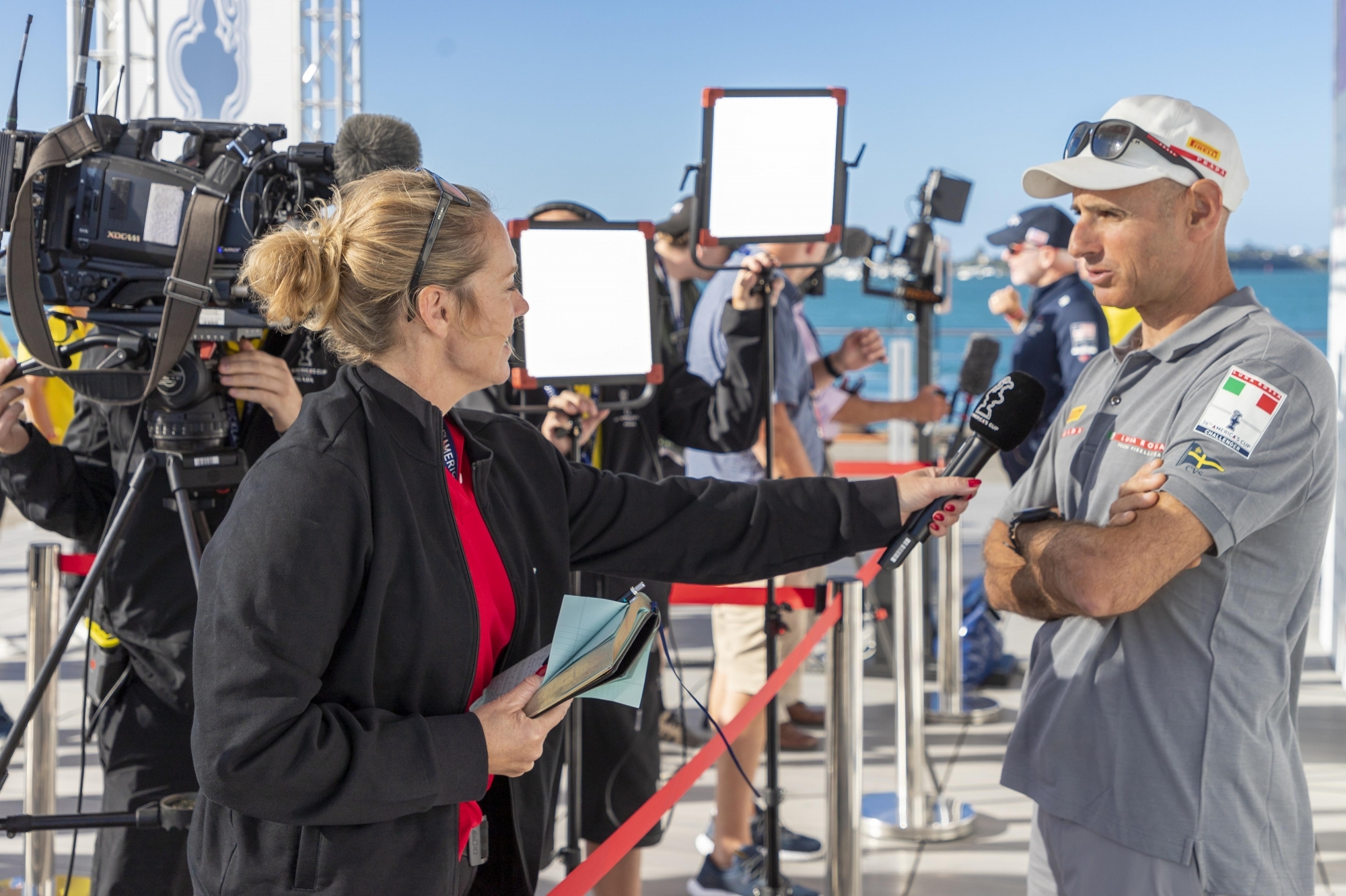Shirley Robertson's 37th America's Cup Preview Podcast

This month Shirley Robertson previews the 37th America's Cup, as the city of Barcelona readies for what promises to be one of the most exciting editions of the famous trophy.
Five Challengers are set to battle it out on the fastest foiling monohulls ever built, as they go head to head in the Louis Vuitton Cup, in a fight to take on the Defender, the current holder of the trophy, Emirates Team New Zealand.
Robertson talks to representatives from all six of the Cup teams, chatting to team members with a wide range of roles, to get a real insight from across the fleet into what to expect come race day.
In this edition, Part One, Robertson kicks off with Emirates Team New Zealand naval architecht, Dan Bernasconi, the brains behind the AC75, the foiling mono-hull that all six teams have built for this edition. With all six AC75s now blasting around the waters off Barcelona at speeds of up to fifty knots, Bernasconi discusses some of the differences between the race boats, as well as discussing changes to the rules for this edition, and the issues that the lumpier sea state off Barcelona may bring.
Robertson also then talks to Luna Rossa Prada Pirelli's port-side helm, Francesco Bruni, helming partner to Jimmy Spithill in the last Cup, the pair that pioneered the dual-helm setup now favoured by all of the America's Cup teams. While at Luna Rossa, Robertson also caught up with match racing guru Philippe Presti, to take a look at how the increased manoeuvrability of the version two AC75s may lead to more engagement and closer racing as the Challenger Series kicks off.
Robertson then heads to AC37 HQ, to catch up with Abby Ehler, the offshore sailing legend and sailing logistics supremo now tasked with delivering the Youth and Women's editions of the America's Cup. Twelve teams will compete in the AC40 race boats for both the UniCredit Youth America's Cup and the Puig Women's America's Cup, the youth event making a return to the regatta after a break in AC36 due to covid travel restrictions. This is however the very first time a women's regatta will take place at the America's Cup, a first that is heralded as a landmark event in sailing's long road to gender equality.
In this the second episode of this two part edition Robertson kicks things off talking to INEOS Britannia's Design Lead, Martin Fischer. Based at Brackley in the UK, Fischer and his Cup design team share an office with the might of the designers behind Lewis Hamilton and George Russell's Mercedes AMG Formula 1 team, so an obvious discussion point is the influence on F1 design on the increasingly imnportant area of aerodynamics. Fischer was lead design at Luna Rossa Prada Pirelli for the last edition of the Cup, and is an expert voice on the evolution of the AC75 design rule, as well as some ideas on how the other teams' boats are shaping up.
Robertson then heads to Orient Express Racing Team, to talk to team CEO Bruno Dubois. Leading a French team that's based heavily on the talented French Sail GP team, Dubois discusses the talented line up in his team of Quentin Delapierre and Kevin Peponnet, he talks about the design package deal between the team and the Defender, and discusses the fact the team were the last to launch their AC75 in Barcelona.
From France, Robertson heads across the Barcelona yacht basin, to the home of American Magic, to site down with podcast regular and all around sailing super-helm, Tom Slingsby. Part of the American dual-helm seup with Paul Goodison, Slingsby is a previous Cup winner, but missed the previous Cup in Auckland, The pair discuss much about sailing the AC75, compare it to the F50 of Sail GP, but also discuss the adoption of recumbent cyclors by the American Team, the only team in the Cup to do so.
Robertson's final chat is with Swiss Olympic rowing star Barnabe Delarze, one of several rowers in the cyclor team at Alinghi Red Bull Racing. A two time Olympian with a win in the famous University Boat Race on his CV, Delarze discusses life as an AC37 cyclor, how pivotal the role is, why so many of the teams are packed with Olympic rowers, and what winning the Cup for two time winners Alinghi would mean to the team.